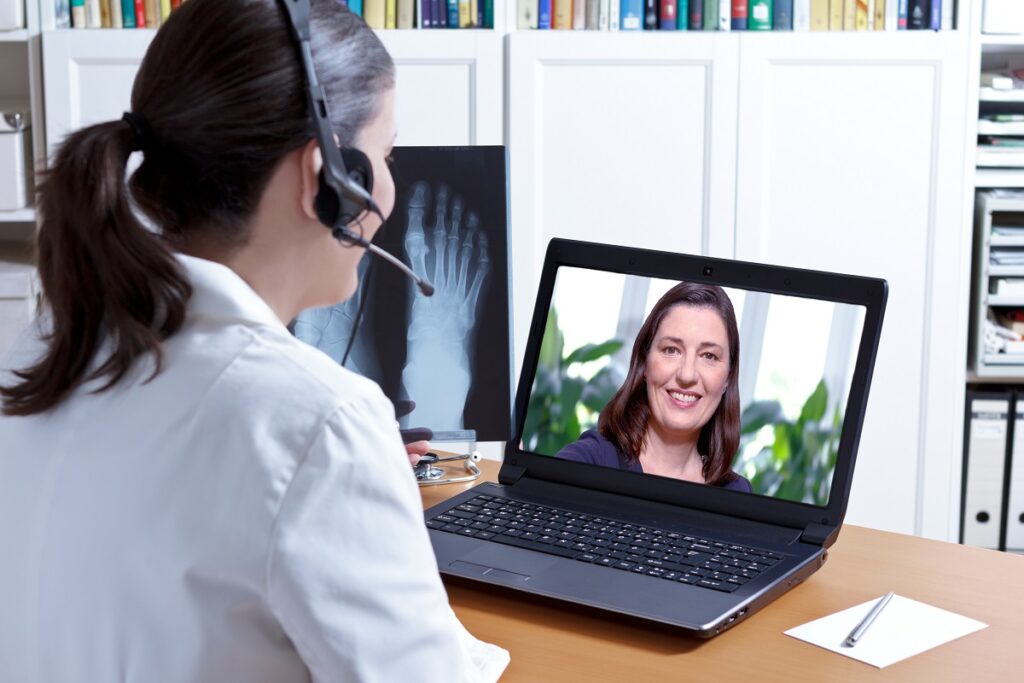- Telemedicine services should prioritize HIPAA compliance to safeguard patient data confidently.
- Developing robust policies and procedures is crucial for seamless telemedicine implementation. The expertise lies in crafting effective frameworks that ensure smooth execution and maximize patient satisfaction.
- Secure confidentiality by leveraging cutting-edge video conferencing technology.
- Leveraging data, improving outcomes, and delivering personalized care are key to effective health services.
As hospitals evolve and adapt to the ever-changing healthcare landscape, telemedicine services are becoming increasingly important. Offering these services can help improve patient care while cutting costs for patients and hospitals. However, offering effective telemedicine services requires careful planning and execution. Here are some of the best tips for making sure your hospital’s telemedicine service is top-notch.
Make sure your telemedicine services are HIPAA-compliant.
When offering telemedicine services in a hospital, it is crucial to ensure that they are HIPAA-compliant. HIPAA, or the Health Insurance Portability and Accountability Act, was enacted in 1996 and provides regulations for protecting patient healthcare information. Noncompliance with HIPAA can result in hefty fines and damage to the hospital’s reputation.
Telemedicine services, including virtual visits and remote consultations, make protecting sensitive patient information all the more important. Hospitals must take specific measures, such as encryption and secure communication channels, to ensure HIPAA compliance when using telemedicine.
Ensure high-quality of service.
Ensuring high quality of services is the most important part of operating a successful telemedicine service. Here are some key steps to take:
Develop effective policies and procedures.
Effective policies and procedures are crucial for hospitals looking to offer telemedicine services. With technological advancements, telemedicine is becoming a popular alternative to traditional in-person visits. Developing a solid plan is essential to ensure the safety of patients and medical professionals as well as the overall success of the program.
Hospital administrators must research and select a reliable telemedicine app with relevant features. This allows patients to experience a seamless virtual appointment that provides a comparable experience to an in-person visit. Telemedicine implementation should be done step wise to ensure efficient and safe adoption of this technology.
Proper training must be conducted for all physicians, nurses and staff involved in the program. Well-designed policies and procedures ensure consistency and quality, increasing patient satisfaction and safety while improving access to care.
Utilize secure video conferencing technology.

Secure video conferencing technology is crucial for hospitals offering telemedicine services. As patients and healthcare providers increasingly turn to telemedicine, the technology must be secure and reliable. Confidentiality is critical to the doctor-patient relationship, and utilizing secure video conferencing technology is an excellent way to protect patient information from interference by unauthorized parties.
This technology ensures secure data transmission, reducing the risk of unintentional data breaches. Secure video conferencing technology offers a convenient and accessible way for patients to connect with physicians for virtual appointments, even remotely.
By implementing secure video conferencing technology, hospitals can provide patients with the comfort and security of knowing their information is being kept confidential. It is essential to stay abreast of the latest innovations in security protocols to provide the most advanced telemedicine facilities possible.
Leverage data to improve outcomes.
In today’s fast-paced world of healthcare, data is becoming an increasingly essential component in delivering effective and efficient telemedicine services. By utilizing data, healthcare providers can identify patient preferences, monitor outcomes, and tailor their services to better meet their patients’ individual needs.
This means that telemedicine services become a convenience and a means of providing higher quality care. Properly leveraging data allows hospitals to optimize their resources, improve patient access to healthcare, and ultimately drive better outcomes. The benefits are clear:
- Patients receive more personalized care when telemedicine services are informed by data analytics.
- Healthcare providers can deliver services more efficiently.
- Overall patient satisfaction increases.
Collect patient feedback regularly.

Collecting patient feedback regularly is an important aspect of any healthcare service, including telemedicine. As patient satisfaction and experience are integral components of healthcare quality, gathering feedback helps hospitals improve their services and outcomes. Regular patient feedback enables hospitals to identify patterns and trends, highlighting the success of their care processes and areas for improvement.
Conducting surveys, questionnaires, and phone interviews are some effective methods to collect patient feedback. With telemedicine, hospitals can seize these opportunities to capture patient feedback to provide care and streamline their services.
Telemedicine allows hospitals to conveniently solicit feedback through email, text messages, or mobile applications. By appropriately collecting patient feedback regularly, hospitals can understand better telemedicine’s impact and continuously improve to serve patients better.
Focus on convenience for both patients and providers.
A major aspect to consider when offering telemedicine services in a hospital is focusing on convenience for both patients and providers. This means streamlining processes to make it as easy and efficient as possible for all parties involved. From scheduling appointments to accessing medical records, the goal should be to create a seamless experience that minimizes disruptions for patients and providers alike.
By doing so, hospitals can improve patient satisfaction and engagement while reducing workload and increasing productivity for healthcare providers. Ultimately, prioritizing convenience can help hospitals to build a reputation for being innovative, patient-centric, and efficient.
To launch a hospital’s telemedicine service successfully, follow these expert tips. Through meticulous planning and execution, hospitals can deliver exceptional telemedicine services that significantly enhance patient care and reduce costs.

